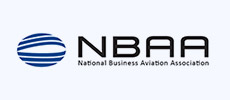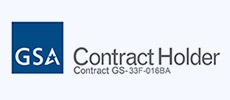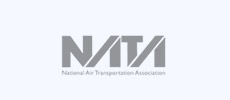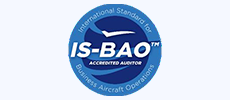According to Business Airport International, the global private jet charter market is estimated to reach $15.27 billion in 2024, with a CAGR of 13.92% over the next five years. The market expansion is a sign that most people now prefer to travel in style and comfort.
A private jet lets you choose a travel time that suits your schedule. This helps you save time and maximize productivity. The luxury and privacy offered by private jets also allow you to travel stress-free.
However, private jet maintenance is essential for maintaining your jet’s airworthiness. Proper maintenance prevents malfunctions and ensures the aircraft operates at peak performance. It also enhances the aircraft’s longevity and dependability.
Are you interested in exploring the top strategies for effective private jet maintenance? Here are maintenance best practices to enhance a private jet’s safety and performance.
Follow the Manufacturer’s Guidelines
Private jet manufacturers always provide a detailed maintenance manual. Adhering to the manual minimizes the risks of maintenance-related issues that could impact your aircraft’s performance. Some of the information contained in the manual includes:
- Maintenance schedules
- Inspection procedures
- Repair Guidelines
- Jet safety protocols
- Approved parts and components list
- Regulatory compliance information
Conduct Regular Inspections
Regular inspections help you detect potential problems before they become serious. When inspecting the craft, you should monitor the following:
- Engine performance
- Tire pressure
- Electrical systems
- Safety equipment
- Condition of external surfaces
- Onboard instruments
If inspecting on your own is a challenge, you can hire a professional. Experts can detect even the slightest issues that you could have missed.
Keep Maintenance Records
It’s a regulatory requirement for you to keep all the records relating to your aircraft maintenance. Authorities like the Federal Aviation Administration (FAA) use the records to determine if your aircraft meets the required safety and operational standards.
Detailed maintenance records also help track any repairs and replacements. A comprehensive repair history also makes obtaining a good resale value on the aircraft easy. Some of the details that you need to record include:
- All maintenance tasks carried out
- Any modifications done
- Discrepancies noted during the inspection
- Date of the last inspection/repair
- Details of the technicians in charge of the maintenance
Use Quality Spare Parts
Quality and genuine spare parts improve the safety and reliability of your aircraft. The compatibility of such parts ensures the jet’s optimal performance, leading to a longer life span. When acquiring spare parts, you should:
- Ensure they are compatible with the make and model of your aircraft
- Ensure they are certified and have a seal of assurance
- Acquire the parts from a reputable dealer
It’s essential to select spare parts with a manufacturer’s warranty. The warranty helps mitigate unwanted costs and assures quality. Inquire about the warranty’s period of coverage, terms, and exclusions when buying replacement components.
Choose Reliable Maintenance Providers
Professional maintenance providers ensure your aircraft receives top-notch maintenance. These experts also use genuine repair parts and follow standard maintenance practices. To ensure you choose trusted service providers, you should check for the following:
- Certifications and qualifications
- Experience and reputation
- Range of aircraft maintenance services offered
- Payment and terms of agreements
The right service provider will develop maintenance scheduling tips that will save you money and time. A private jet management expert can connect you with professional aircraft maintenance technicians.
Invest in Crew Training
Continuous training keeps your crew up-to-date with the latest safety protocols and aviation regulations. It also equips them with relevant knowledge of aviation maintenance trends. To promote continuous learning, you can:
- Come up with a regular training schedule
- Partner with certification programs
- Provide incentives to crew members who complete their certifications
Implement Advanced Monitoring Systems
Advanced monitoring systems provide real-time data about your Aircraft. The data helps you monitor the aircraft’s performance and alerts you of potential technical issues.
This allows you to intervene promptly before such issues become critical. Some of the monitoring systems you can implement include:
- Vibration monitors to detect abnormal vibrations from the aircraft
- Temperature monitors to detect abnormal temperature changes
- Pressure monitors to detect a change in pressurization
- Electrical current measurement systems
- Speed measurement systems to monitor aerodynamic stall
The above list is not comprehensive, but the above monitors help you determine a movement away from baseline values.
Stay Updated With Regulatory Changes
Aviation regulations keep on evolving to match modern aviation needs. Keeping abreast of such changes enhances compliance, saving you from legal actions. To stay up to date on changes in aviation regulations, you should:
- Visit the websites of aviation authorities such as the FAA
- Attend aviation conferences and seminars
- Work with aviation compliance consultants
- Join professional aviation organizations
Regularly Review and Update Maintenance Procedures
Regularly reviewing luxury jet upkeep procedures helps you align with the latest industry standards. This helps you adopt high safety and performance standards. To effectively review maintenance procedures, you should:
- Perform routine audits on the existing procedures
- Stay informed on industry standards
- Use a structured continuous improvement program like Six Sigma
- Seek an honest review of the current procedures from a professional
Establish a Maintenance Budget
A maintenance budget ensures the efficient allocation of resources. A detailed budget also ensures all maintenance and repair costs are accounted for.
This saves you from surprise costs, which can force you to acquire substandard repair parts. To ensure effective budgeting, you should do the following:
- Analyze historical data on maintenance expenses
- Set aside a contingency fund
- Seek professional advice
Sufficient funds allow you to cover all compliance needs and safety training costs easily. If budgeting for maintenance costs is a challenge, you can consult private jet maintenance experts.
Discover the Best Private Jet Maintenance Practices to Enhance Safety Today
Regular private jet maintenance enhances the performance and reliability of your aircraft. It also leads to enhanced safety and improved lifespan. Follow the above guide on maintenance of private jets and get it right.
Are you looking for reliable and luxurious private jets to allow you to travel in style? At Presidential Aviation, we’ve got you covered. We offer comprehensive jet management, jet sales, and jet maintenance services tailored to meet your unique needs.
Check out our website today to learn more about our quality private jet management and maintenance services.






